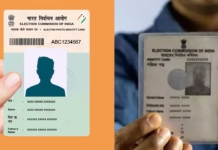The digital world never stands still, and Nano Banana AI proves that point. Behind its unusual name lies a groundbreaking Google initiative. Instead of focusing on text or speech, this tool specializes in generating images from descriptions. It allows ordinary users to transform simple words into complex visuals, opening a new dimension in creative expression.
What Makes Nano Banana AI Different
Unlike traditional image-editing tools, Nano Banana AI doesn’t require design skills. You describe what you want, and the AI converts your words into visuals. Google has designed it to interpret context with surprising accuracy, giving outputs that feel natural rather than artificial. This makes it useful not only for artists but also marketers, educators, and businesses.
The Technology Behind the Magic
At the heart of Nano Banana AI lies advanced machine learning. Google uses large-scale neural networks trained on massive image datasets. These models analyze text inputs, break them into visual elements, and then reconstruct them as original images. The outcome isn’t copied content but freshly generated visuals, built pixel by pixel through intelligent algorithms.
Why Google Entered Image AI
Google’s decision to invest in Nano Banana AI comes from a bigger vision: making creativity more accessible. Most design platforms have steep learning curves, but this AI reduces barriers. By combining natural language processing with image synthesis, Google ensures that anyone—whether a professional or beginner—can bring ideas to life without technical hurdles.
Applications in Marketing
Businesses are discovering new opportunities with Nano Banana AI. Instead of paying for stock photos, companies can generate customized visuals tailored to campaigns. A small business could describe its product, and within seconds, receive polished images ready for advertising. This flexibility saves time, reduces costs, and ensures originality—critical factors in today’s competitive digital marketplace.
Helping Educators and Students
Education also benefits from this technology. Teachers can generate diagrams, illustrations, or even historical recreations in seconds. Students working on projects can visualize complex concepts without relying solely on textbooks. By bridging imagination with accessibility, Nano Banana AI enhances learning experiences and encourages creativity in classrooms where visual aids were once limited.
Artistic Possibilities
Many creators struggle with moments of stagnation, and Nano Banana AI offers support as a collaborative tool. By generating base images, it offers inspiration that creators can modify and refine. Instead of replacing human art, it provides a canvas for experimentation. Painters, digital illustrators, and photographers can all use it as a brainstorming tool for visual storytelling.
Ethical Considerations
With new technology comes responsibility. Image-generation AI raises questions about authenticity and ownership. If Nano Banana AI creates an image, who owns it? How do we prevent misuse, such as generating misleading visuals? Google acknowledges these challenges and is working on safeguards, including watermarking and ethical guidelines, to ensure fair and responsible use.
The Role of AI in Accessibility
One of Google’s goals with Nano Banana AI is inclusivity. People with disabilities who may struggle with traditional design tools can now create visuals using only descriptions. This not only promotes accessibility but also ensures equal opportunities in creative and professional fields. AI-driven image generation becomes a tool for empowerment, not limitation.
Business Opportunities for Google
For Google, Nano Banana AI is more than an experimental project—it’s a potential revenue stream. By integrating the tool into its ecosystem, such as Google Workspace or advertising platforms, the company could provide premium features to businesses. This aligns with Google’s strategy of combining innovation with commercial opportunities in the growing AI market.
How It Stands Against Competitors
Several companies are exploring AI-generated images, but Google’s approach with Nano Banana AI is unique. Its advantage lies in data, scale, and integration. With access to one of the largest information networks in the world, Google ensures higher accuracy and more refined results. This gives it a competitive edge in an increasingly crowded AI space.
Download App
The Future of Nano Banana AI
Looking ahead, Nano Banana AI may evolve beyond static images. It could generate 3D visuals, animations, or even interactive designs. Imagine creating a virtual world by typing a sentence. Such advancements could transform industries like gaming, film, and digital marketing, placing Google at the center of the next wave of creative innovation.





